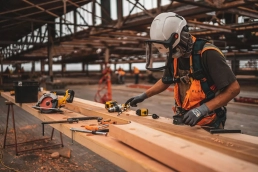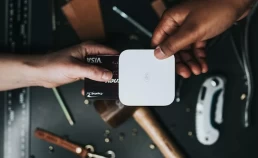Being connected is crucial to running a successful business, but connectivity goes beyond the Internet. The physical world around you is constantly producing data, but only with sensors can you harness that information to create the most efficient business or office space. The process of connecting physical objects together using digital is often known as ‘The Internet of Things’. Once sensors are in place, you can start to use connectivity to achieve optimum working environments and, in turn, optimum productivity.
Table of Contents
ToggleInternet of Things
‘Internet of Things’ is an idea and term coined by Kevin Ashton, a technology pioneer most commonly known for his development of radio frequency controlled proximity sensors in the 1990s. He frequently dreamt of how technology would develop in the future, and whilst you may have been imagining flying cars, Kevin predicted a far more conceivable outcome – which stemmed from a popular lipstick.
Working at Procter and Gamble, a famous consumer goods company, Kevin noticed that a certain lipstick was always out of stock in local stores. In-store staff members were unable to constantly monitor the shelves and input the data themselves so, as the manufacturers were unaware, the lipstick would not get replenished.
Using proximity sensors to track the movement of the lipsticks and feed the data back to the computer, P&G was able to monitor the numbers and restock when necessary. The system was more efficient, which cultivated more sales and a better customer experience.
Realising the potential of collecting physical data for computers to process, Kevin developed the idea that, in the future, nearly all physical ‘things’ could be connected to the Internet. The information provided by the network of connections would allow people to enhance the performance and process of the ‘things’.
Stock control is one of the first and more common examples of the use of proximity sensors to aid business strategies. Since then, the development of sensors and their ability to track data across our physical environment has been crucial for creating an efficient and successful business. With a wide variety of sensors available online, like RS Components’ array of proximity sensors, you can start to explore how different sensors can be implemented to further your business.
The Nest Thermostat
One of the most successful case studies of using the Internet of Things to improve the surrounding environment is the Nest Thermostat.
The intuitive device tracks your movements, learning when you’re awake, asleep and away, using sensors. The collected data allows Nest to efficiently adapt the temperature to suit your lifestyle.
Using proximity sensors, such as those listed on RS Components, could save you and your company money.Creating a more effective air conditioning timetable from the data collected, like the Nest Thermostat, could reduce the time and energy used to regulate the temperature of your work environment. Reducing the amount of energy means reducing the money spent on bills – a win for your business.
A further benefit of having a refreshingly cooled (or heartily heated) workspace is that you and your employees will be comfortable and alert. Having a happy, comfortable team can do wonders for morale and boost productivity. Result!
Should proximity sensors be used to monitor productivity?
In 2016 UK newspaper, The Daily Telegraph, sent an email around to its staff members, explaining that sensors had been fitted to every desk in the building. With both heat sensors and proximity style sensors applied, the company could record how long each desk was in use across the week in order to figure out a more efficient way of managing the space.The point of the experiment was to calculate if they could reduce the number of computers and desks and, in turn, reduce the energy used in a bid to be more conscious of the environment.
Monitoring movement in the work place is beneficial to the environment, work productivity, and economic impact, but it is important to be transparent as to why you are monitoring your employees. The National Union of Journalists saw the newspaper company’s test as a breach of privacy, assuming the ‘Big Brother’ style surveillance was for an ulterior motive.
If you are planning to track office activity, for any purpose, consider talking to your employees regarding your motivations to avoid any misunderstanding.
Can Sensors Better Your Business?
Whether it is to manage office space, improve energy usage, or perhaps keep an eye on those employees who may spend a little too much time chatting around the kettle and not enough time at their desks, sensors are fast becoming an office staple.
With the variety of sensors available, how do you see the ‘Internet of Things’ shaping your business?
Glen Dimaandal is the founder and CEO of the GDI SEO Company, a search marketing agency based in the Philippines. He is a former SEO Manager at Fortune 500 corporations and is now a full-time entrepreneur.





